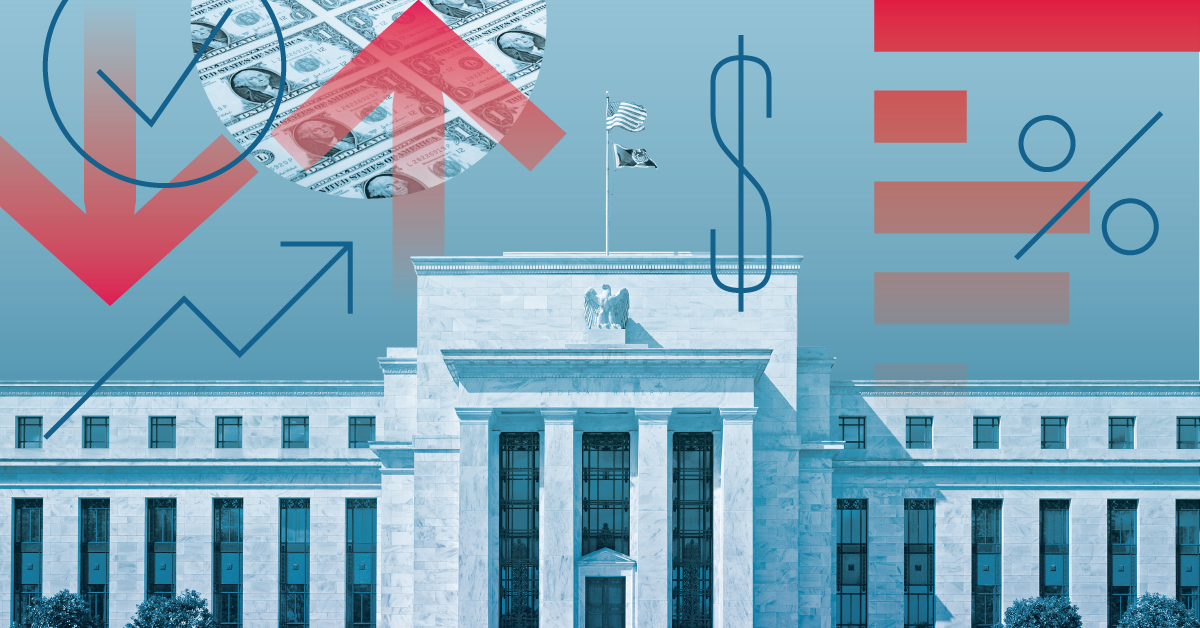Jason Stipp: I'm Jason Stipp for Morningstar.
2014 global growth trends look brighter, according to the IMF. Here to dig into the drivers and possible up- and downsides for global growth is Morningstar's Bob Johnson, our director of economic analysis.
Thanks for joining me, Bob.
Bob Johnson: Great to be here, today.
Stipp: Let's start first by talking about why global growth is important to us here in the United States.
Johnson: Exports have now become a key part of U.S. economic growth. Exports now represent about 13.5% of GDP. That's up from something more like 5% in the 1950s. So, we've really brought that number up.
We all tend to whine and complain about how we're getting more imports from China or one country or another, and it's hollowing out America. On the other hand, the U.S. is also exporting more. Because we're importing things, those countries have more money to buy our goods, and exports have gone up dramatically over the last 20 years.
Stipp: What sorts of things are we exporting?
Johnson: We've always been good at agriculture; soybeans, corn, and wheat are always big exports.
Airliners are another area. There are really only two major suppliers in the world that can do the bigger aircraft, and those are very expensive, so certainly that's an aid.
And while we can't export oil directly from the U.S., gasoline products, natural gas, and chemical products made from oil are other items that can help the U.S. economy.
And then finally, I'd add capital goods--things that help other countries produce the goods that we buy from them. The capital equipment that actually makes those goods often comes from the United States.
Stipp: Exports are a bigger part than they were of GDP, so it's important to look at the growth rates of the rest of the world to see how those exports are going to go.
Let's talk about some of those growth rates. If we divide the world into the advanced and the emerging economies, you do see some notable differences, some expected differences, but also some interesting trends.
Let's start with advanced economies. How does the IMF expect growth in 2014?
<TRANSCRIPT>
Johnson: The IMF data indicates that we grew about 1.2% in 2013, and we may grow by as much as 2% in 2014, so a really nice improvement. I think the key driver--I can go through a bunch of them--but I think the key driver is probably less austerity in the developed, or advanced, economies across the board.
You can start with Japan and some of their efforts to end deflation, and some of their attempts to even raise their inflation rate a bit, which are going into place in a relatively major economy.
Last year, in the U.S., recall that the deficit was reduced by almost $400 billion, the most it's ever gone down in one year, and that certainly hurt the U.S. economy.
Then in Europe, they've been under a tight austerity program, and especially in the peripheral countries, to try to get their debt in line.
Across all three major regions, there was some real government austerity, and that's why last year's numbers are weak, and then this year, we're all hoping things look a little better.
Stipp: The IMF is expecting 2% from the advanced economies. What about the emerging markets? What's the IMF expectation for growth there?
Johnson: We'd all hope to have growth as good as theirs. They were growing about 4.5% in 2013, going to something closer to 5% in 2014. So, an acceleration in growth rate, but interestingly, the bigger swing comes in the developed economies, where we're going from 1.2% to 2%. The move from 4.5% to 5%, on a relative basis, is much less.
Stipp: Are we also expecting the increased trade between all of these countries will contribute to the faster growth rates that are expected for both advanced and emerging economies?
Johnson: Absolutely. As you go through the data and read about individual countries, I think they all say, now things have picked up a little bit elsewhere around the world, that will encourage free trade and more exports, and hopefully lift the whole world economy a bit in 2014. I think that will be one of the other key drivers to all the economies.
Stipp: In the emerging markets, the big one we always look at is China. What are the expectations for China's economic growth?
Johnson: There, we're looking at about 7.5% growth, and it's been about that rate for the last two years. That's down from the 10% to 12% growth that we all got accustomed to, and I don't think it's going back to those numbers. They're trying to shift to a more consumer-oriented economy, from their big infrastructure-building mode, and their big export mode. Exports [out of China] can't continue at the pace that they were. They would have faced a lot of export barriers if they continued along that path. And internally, pollution is arguing against more heavy industry. With Beijing's shutdowns on many days of the year in the winter, it's just tough to say that we should produce more steel and use more coal.
Stipp: What about the eurozone? They managed to eke out a little bit of growth in 2013. What are the expectations for 2014?
Johnson: I think Europe turned the corner last year. They finally had some positive GDP starting in the June quarter. I think we'll go from a negative 0.4% for the full year 2013 to something over 1% for the full year in 2014. And the first data read that we've gotten on the December quarter looks like they'll be in that range. So I'm pleased with what I've seen so far there.
Stipp: Are the drivers in Europe similar to the U.S., with the austerity situation wearing off a bit?
Johnson: I think the austerity wearing off is certainly one of the factors there, and they're a little bit more of an export-oriented economy. So, they'll benefit from the stronger world economy for sure. And Europe has got, with a lag, some of the things that helped the U.S. economy out of its mess--a better auto industry, which seems to be picking up over there, as well as aerospace and defense, which have done well, and chemicals. Those are three areas that have helped move the U.S. along that may actually move [Europe] along as well.
Stipp: Eurozone and China are in the U.S. headlines a lot, but actually our bigger trade partners are Mexico and Canada.
Johnson: Yes.
Stipp: What are we expecting from those economies, which could have a more direct impact on our GDP.
Johnson: Those two economies had kind of a rough 2013, with Mexico's growth getting as slow as just over 1%, and Canada at 1.6% in 2013. As we look to 2014, Mexico could be up to 3%, and Canada could be over 2%. So, that's a nice acceleration for our two biggest trading partners.
In Mexico's case, better control of inflation, which they really clamped down on in 2013, hurt results, and now as they burn that off a little bit, [their economy] will look a little bit better. And they've opened up their economy, too. That won't necessarily help immediately, but now that they're allowing more oil investment in their country, and in general seem to have gotten their arms around some of the crime issues, I think they'll do a little bit better.
In Canada, I think some of the worst of the commodity bust, if you will, is probably behind us, and that will help them out a little. They benefit also from our U.S. auto industry. Between Mexico, Canada, and the U.S. it's actually one big triumvirate in the auto industry. So, I think they'll probably do better as well.
Stipp: When you wrap it all up, what is the IMF expecting for the whole global growth in 2014?
Johnson: Better. 2.9% growth in 2013 and something that looks 3.6% in 2014. So, a nice overall improvement, driven primarily by [better results] in the developed economies.
Stipp: And what is the IMF expecting for U.S. GDP?
Johnson: They're a little bit aggressive there, if I had to pick anything that was off in the IMF's numbers. They're thinking 2.8%, and as you know, I've been a little bit more conservative, thinking the U.S. would grow in the 2%-2.5% range, with a single point of 2.25% growth in 2014.
Stipp: What could cause these estimates to be too optimistic? What are some of the trouble signs or some worries that we should have on our radar?
Johnson: [Trade is] both a positive and a negative. You read each individual country, and they all say, well, I'm going to benefit from more trade. Obviously if everybody thinks they're going to export more, it really doesn't end up helping everybody as much as they think, and that's certainly one of the concerns that's out there.
I'm also concerned about continued tight lending conditions in many markets, for all different reasons. The U.S. [lending] market remains tight for housing. They really clamped down, and the new legislation, Dodd-Frank, certainly won't help. It's still hard to get a mortgage here, and unless that loosens up, we won't do much better. In Europe, small businesses still can't get a loan. It's still very, very difficult to do that. That holds back their growth. And in emerging markets, they're under a little bit of a credit crunch as the Fed continues to taper and pull money back from those markets.
So, the tightness in money is certainly holding things back a little bit. If that were to get any tighter or even remain where it's at, the economy won't do as well as the IMF thinks.
Stipp: And you [alluded to] interest rates there. If rates go up faster than expected, that would be a big headwind for global growth?
Johnson: That would have a big headwind.
Stipp: What about commodities prices? Being where they are now, you mentioned that they might have bottomed out. How could commodities be a wildcard for the global economy?
Johnson: It varies by country and region. It changes the dynamics a little bit. The developed countries--and in that, I'd probably include China, too--benefit from lower commodity prices, because we're all net users; whereas, most of the rest of the world and especially emerging markets all depend on selling either gas, gasoline, rubber, plant products--a lot of things that are basic materials. And if commodity prices don't do, emerging markets won't do well.
Stipp: And if we turn to look at what might be an upside surprise, what should be on our list there? You mentioned tight lending, so I assume if that loosens a little bit, that could be a boost to the economy.
Johnson: Absolutely. If the individual banks, in order to boost profits, decided that they could go a little bit lower in their lending curve and lend out a little bit more money, that would certainly be a positive. Like I say, lending has been holding things back. If that got easier, that would be the biggest help. We saw a little bit even last week, with consumers borrowing a little bit more money than they had, which is actually good news for the economy.
Stipp: It looks like for overall global growth, we have some pretty good news. We're going to see some acceleration in both advanced and the developing world. Thanks for joining us today and for the drivers on those underlying growth factors.
Johnson: Great to be here.
Stipp: For Morningstar, I'm Jason Stipp. Thanks for watching.






















